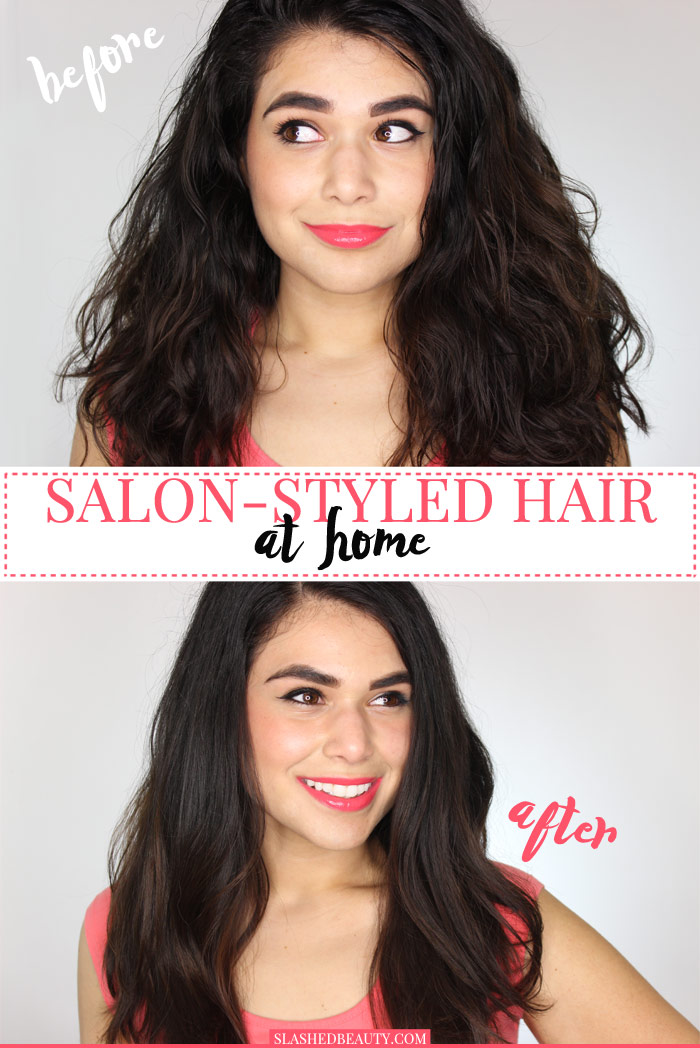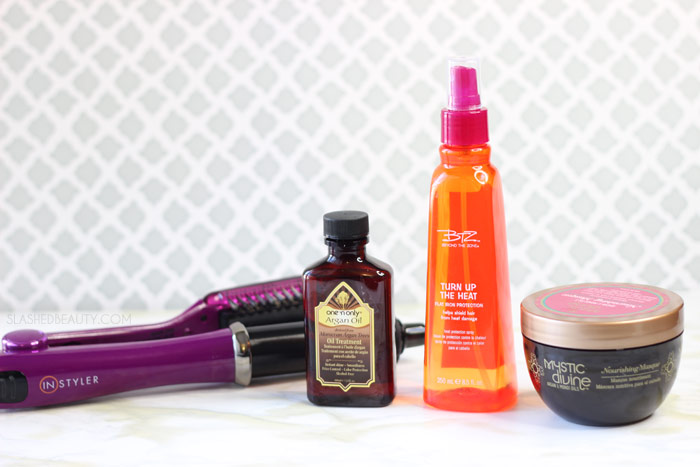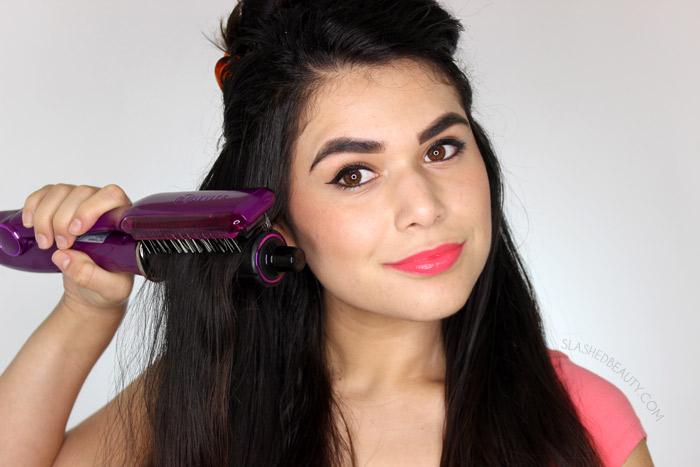5 Simple Steps to Achieve Salon-Worthy Hair at Home

Contents
- 1 Unlock Your Inner Hair Stylist: 5 Simple Steps to Salon-Worthy Hair at Home
- 1.1 Step 1: The Foundation – Mastering the Art of the Wash
- 1.2 Step 2: The Conditioning Conundrum – Hydration is Key
- 1.3 Step 3: Towel-Drying Triumphs – Gentle is Golden
- 1.4 Step 4: Styling Savvy – Embrace the Right Tools
- 1.5 Step 5: Finishing Touches – The Secret Weapon
- 1.6 Additional Information
- 1.7 Achieving Salon-Worthy Hair at Home: A Deeper Dive into the Five Steps
Unlock Your Inner Hair Stylist: 5 Simple Steps to Salon-Worthy Hair at Home
Dreaming of luscious locks worthy of a magazine cover, but dreading the salon price tag and appointment scheduling? You don’t need a stylist’s magic touch to achieve enviable hair. With the right techniques and a little patience, you can transform your mane into a salon-worthy masterpiece right in your own bathroom. Let’s unravel the secrets to achieving that coveted professional look, one simple step at a time.
Step 1: The Foundation – Mastering the Art of the Wash
Believe it or not, the journey to salon-worthy hair begins in the shower. It’s not just about scrubbing your scalp; it’s about understanding your hair type and choosing the right products. Forget the “one-size-fits-all” approach. Dry, damaged hair needs a moisturizing shampoo and conditioner, while oily hair benefits from clarifying formulas.
Pro Tip: Don’t over-wash! Washing too frequently can strip your hair of its natural oils, leading to dryness and damage. Aim for 2-3 times a week, or even less depending on your hair type.
| Hair Type | Recommended Shampoo |
|---|---|
| Dry/Damaged | Moisturizing, Hydrating |
| Oily | Clarifying, Volumizing |
| Fine | Lightweight, Volumizing |
| Thick/Coarse | Moisturizing, Smoothing |
Step 2: The Conditioning Conundrum – Hydration is Key
Conditioning isn’t just an afterthought; it’s a crucial step in achieving salon-worthy shine and manageability. Choose a conditioner that complements your shampoo and addresses your specific hair needs. For extra hydration, consider a deep conditioning treatment once a week.
Pro Tip: Let your conditioner sit for a few minutes before rinsing. This allows the ingredients to penetrate the hair shaft, delivering maximum hydration and smoothing.
Step 3: Towel-Drying Triumphs – Gentle is Golden
Rough towel-drying can lead to breakage and frizz. Instead, gently squeeze excess water from your hair using a microfiber towel or an old t-shirt. These materials are much gentler on your hair than traditional terrycloth towels.
Pro Tip: Avoid vigorously rubbing your hair dry, which can cause friction and damage.
Step 4: Styling Savvy – Embrace the Right Tools
The right tools can make all the difference in achieving a polished look. Invest in a good quality hair dryer with multiple heat settings, a round brush for volume and smoothing, and a flat iron or curling iron depending on your desired style. Remember, heat styling can damage your hair, so always use a heat protectant spray before applying any heat.
| Styling Tool | Benefit |
|---|---|
| Round Brush | Volume, Smoothness |
| Flat Iron | Straightening, Smoothing |
| Curling Iron | Waves, Curls |
Step 5: Finishing Touches – The Secret Weapon
The final step is often overlooked, but it’s crucial for locking in your style and adding that extra touch of polish. A finishing spray or serum can add shine, control frizz, and protect your hair from humidity. Choose a product that suits your hair type and desired finish.
Pro Tip: A little goes a long way. Start with a small amount of product and add more as needed to avoid weighing your hair down.
By following these five simple steps, you can easily achieve salon-worthy hair at home, saving money and time while enjoying the satisfaction of creating a stunning look all by yourself. Embrace your inner stylist, experiment with different techniques, and let your hair shine!

Additional Information
Achieving Salon-Worthy Hair at Home: A Deeper Dive into the Five Steps
While the “5 Simple Steps” approach provides a helpful overview, achieving truly salon-worthy hair at home requires a nuanced understanding of hair science and individual needs. This analysis delves deeper into each step, offering insights and addressing potential challenges.
Step 1: Understanding Your Hair Type and Needs: This seemingly simple step is foundational. Failing to properly assess your hair type (fine, medium, thick; straight, wavy, curly, coily) and its current condition (damaged, dry, oily) leads to ineffective product selection and styling techniques.
-
Analysis: Hair porosity (the ability of the hair shaft to absorb moisture) plays a crucial role in product efficacy. High porosity hair requires heavier, moisturizing products to seal in hydration, while low porosity hair benefits from lighter, oil-free formulas to prevent product buildup. Ignoring porosity can lead to frizz, dryness, or weighed-down hair. There’s no single “best” product; it’s about choosing products tailored to your unique hair profile.
-
Value-Added Insight: Conduct a strand test to determine your porosity. Place a strand of clean, dry hair in a glass of water. High porosity hair sinks quickly, low porosity hair floats, and medium porosity hair sinks slowly. This simple test informs your product choices significantly.
Step 2: Selecting the Right Products: This step goes beyond simply buying shampoo and conditioner. It involves choosing products that address specific concerns and complement your hair type.
-
Analysis: The market is saturated with products promising miraculous results. Focus on ingredient lists. Sulfates, silicones, and parabens are common ingredients that, while effective for cleansing and conditioning, can be harsh on hair and scalp in the long run, particularly for those with color-treated or sensitive hair. Look for natural alternatives like sulfate-free shampoos and conditioners containing nourishing oils (argan oil, coconut oil) or hydrating ingredients like hyaluronic acid.
-
Value-Added Insight: Consider a clarifying shampoo once a month to remove buildup from styling products and hard water minerals. This will improve product absorption and prevent dullness.
Step 3: Mastering the Art of Washing and Conditioning: This is more than just lathering and rinsing.
-
Analysis: The water temperature matters. Hot water strips natural oils, leading to dryness and breakage. Lukewarm or cool water is ideal. The way you apply conditioner is crucial. Focus on the ends, where hair is most prone to damage, and avoid the scalp unless specifically designed for scalp treatment. Leaving conditioner on for a few minutes allows it to penetrate the hair shaft.
-
Value-Added Insight: Consider a pre-shampoo treatment (oil or mask) once a week for extra hydration and repair. This helps to create a protective barrier against damage during washing. A study published in the International Journal of Trichology showed that pre-shampoo oil treatments significantly improved hair shine and reduced breakage in damaged hair.
Step 4: Styling Techniques for Different Hair Types: The “one-size-fits-all” approach fails here. Each hair type requires a tailored approach.
-
Analysis: Heat styling can cause significant damage. Use heat protectant sprays before using any heated tools (straighteners, curling irons, blow dryers). Air drying is always preferable, but if you must use heat, use it on a low setting. For curly hair, techniques like plopping (wrapping hair in a microfiber towel) or diffusing (using a diffuser attachment on a blow dryer) help to enhance curls without causing frizz.
-
Value-Added Insight: Invest in high-quality heat styling tools with temperature controls. Excessive heat is a common culprit for damage. Understanding your hair’s heat tolerance (using heat styling tools at lower temperatures) is crucial for long-term hair health.
Step 5: Maintaining Healthy Habits: This aspect is often overlooked.
-
Analysis: Regular trims are essential to remove split ends and prevent further damage. A balanced diet rich in protein and vitamins is crucial for hair growth and strength. Staying hydrated helps to keep hair moisturized. Stress and lack of sleep also affect hair health, contributing to hair loss and breakage.
-
Value-Added Insight: Consider adding biotin and collagen supplements to your diet after consulting your doctor. Several studies suggest that these supplements can improve hair growth and thickness, although more research is needed. Maintaining a healthy lifestyle contributes significantly to the overall health and appearance of your hair.
In conclusion, while achieving salon-worthy hair at home requires effort and attention to detail, a deep understanding of hair science and personalized approaches based on your unique hair type can yield significant results. The five steps provide a framework; this expanded analysis offers the knowledge needed to truly master the process.

